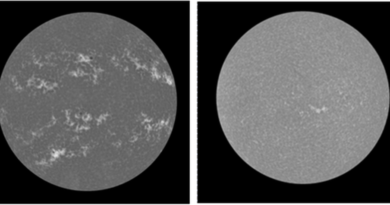AI is Revolutionising Sustainable Tech-driven Farming |Ias Banenge
Context:
Despite the planet producing enough food to feed everyone, approximately one billion people remain hungry and malnourished due to various factors. With the world’s population projected to reach 9.7 billion by 2050, the agriculture sector faces mounting pressure to produce food more efficiently while minimizing resource use and environmental impact. Fortunately, AI holds significant promise for revolutionizing food systems and tackling these challenges head-on.
Relevance:
GS3-
- Cropping Patterns
- Food Security
- Artificial Intelligence
Mains Question:
By harnessing data-driven insights, AI empowers farmers to optimise resource allocation, mitigate environmental degradation and enhance crop yields. Discuss. (10 Marks, 150 Words).
READ MORE- Social Media’s Impact on Indian Politics
Role of artificial intelligence (AI) in Agriculture:
The integration of artificial intelligence (AI) into agriculture is poised to address pressing issues such as food waste, climate change, and global hunger.
Data- Driven Insights:
- AI technology can empower farmers by providing data-driven insights to optimize resource utilization and reduce environmental footprint.
- By analyzing data from diverse sources, AI can help farmers make informed decisions about crop selection, planting times, and cultivation methods.
- According to analysis by the World Economic Forum, integrating AI into agriculture could lead to a 60% reduction in pesticide use and a 50% reduction in water usage.
Market Demand Analysis:
- Market demand analysis is a crucial aspect of modern agriculture, and AI can enhance this process by analyzing meteorological data, satellite imagery, and other relevant factors.
- AI algorithms can assist farmers in selecting the most profitable crops to grow, predicting market demand, and minimizing the risk of crop failures through forecasting and predictive analytics.
- Additionally, AI-powered software applications can assess the quality, freshness, and size of fruits and vegetables, enabling farmers to take proactive measures to maintain crop health and quality.
Enhancing Plant Breeding Efforts:
- AI technologies also play a vital role in enhancing plant breeding efforts and optimizing soil management practices.
- By gathering data on plant growth and performance, AI systems can identify high-performing plant varieties and facilitate the development of superior hybrids.
- Moreover, AI-based tools like the Nutrient Scanner can analyze soil samples to provide farmers with precise estimates of nutrient deficiencies, enabling them to optimize fertilization schedules and irrigation practices.
Pest and Disease Management:
- Furthermore, AI can contribute to pest and disease management by monitoring plant health, detecting diseases, and recommending appropriate treatments.
- By leveraging AI-driven insights, farmers can effectively manage weeds, pests, and diseases while minimizing the use of chemical inputs.
- AI technology can also recommend targeted treatments for pests, reducing reliance on broad-spectrum insecticides that can harm beneficial insects and contribute to pesticide resistance.
- AI-powered technologies enable rapid identification of plant diseases and pests, allowing farmers to take timely corrective actions. For example, an AI system can detect aphid infestations in a strawberry field, alert the farmer via smartphone, and recommend appropriate intervention measures.
- Additionally, AI can automate tasks such as insect or weed control, with robotic weeding achieving high accuracy rates through computer vision technology and significantly reducing pesticide usage.
Track Plant Maturity:
- Estimating crop growth and maturity can be challenging and time-consuming for farmers, but AI can perform this task accurately and efficiently.
- By utilizing AI-powered tools such as sensors and image recognition technology, farmers can monitor crop changes and accurately forecast ideal maturity times.
- Studies have shown that AI-based predictions of crop maturity outperform those made by human observers, potentially leading to significant cost savings and increased revenues for farmers.
Monitor Soil Conditions:
- Integrating sensors and AI systems allows farmers to precisely monitor soil conditions, including factors such as temperature, pH levels, nutrient content, and moisture levels.
- These sensors collect data that is then processed by AI algorithms to provide farmers with actionable insights for optimizing crop management practices.
The Path Ahead:
- The adoption of AI in agriculture is expected to grow substantially in the coming years, transforming the industry by improving efficiency, reducing waste, and increasing crop yields.
- Market research projects a rapid expansion of the AI in agriculture market, with a Compound Annual Growth Rate (CAGR) of 35.6%, leading to a market size increase from $2.35 billion in 2020 to $10.83 billion by 2025.

- This growth will enable more informed decision-making and contribute to addressing the global food security challenge by enhancing crop productivity.
Conclusion:
In summary, the application of AI in agriculture holds immense potential to transform food production systems, enhance sustainability, and address global food security challenges. By leveraging AI technologies, farmers can make more informed decisions, optimize resource utilization, and minimize environmental impact, ultimately contributing to a more resilient and sustainable agricultural sector.
SOURCE : THE HINDU




